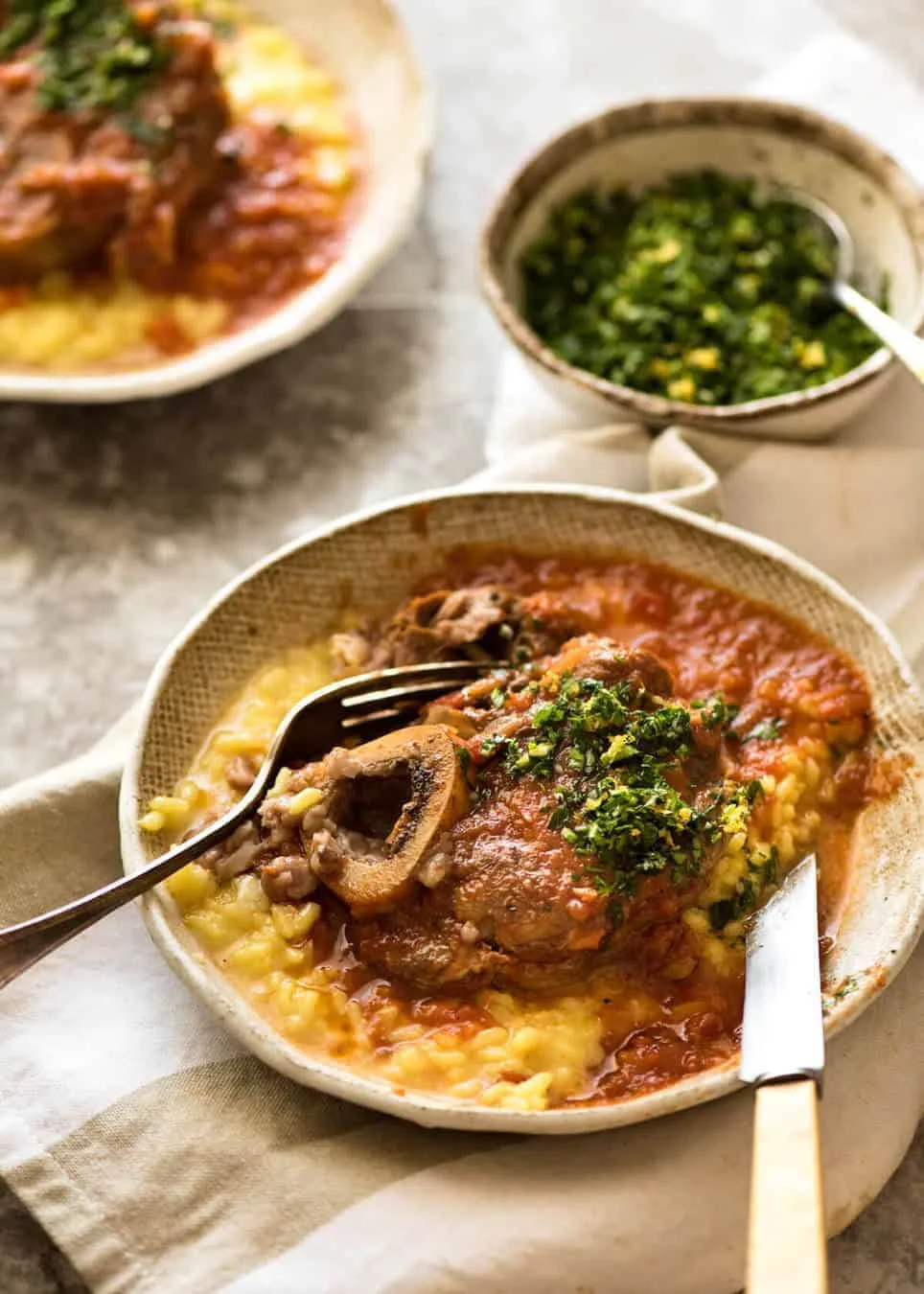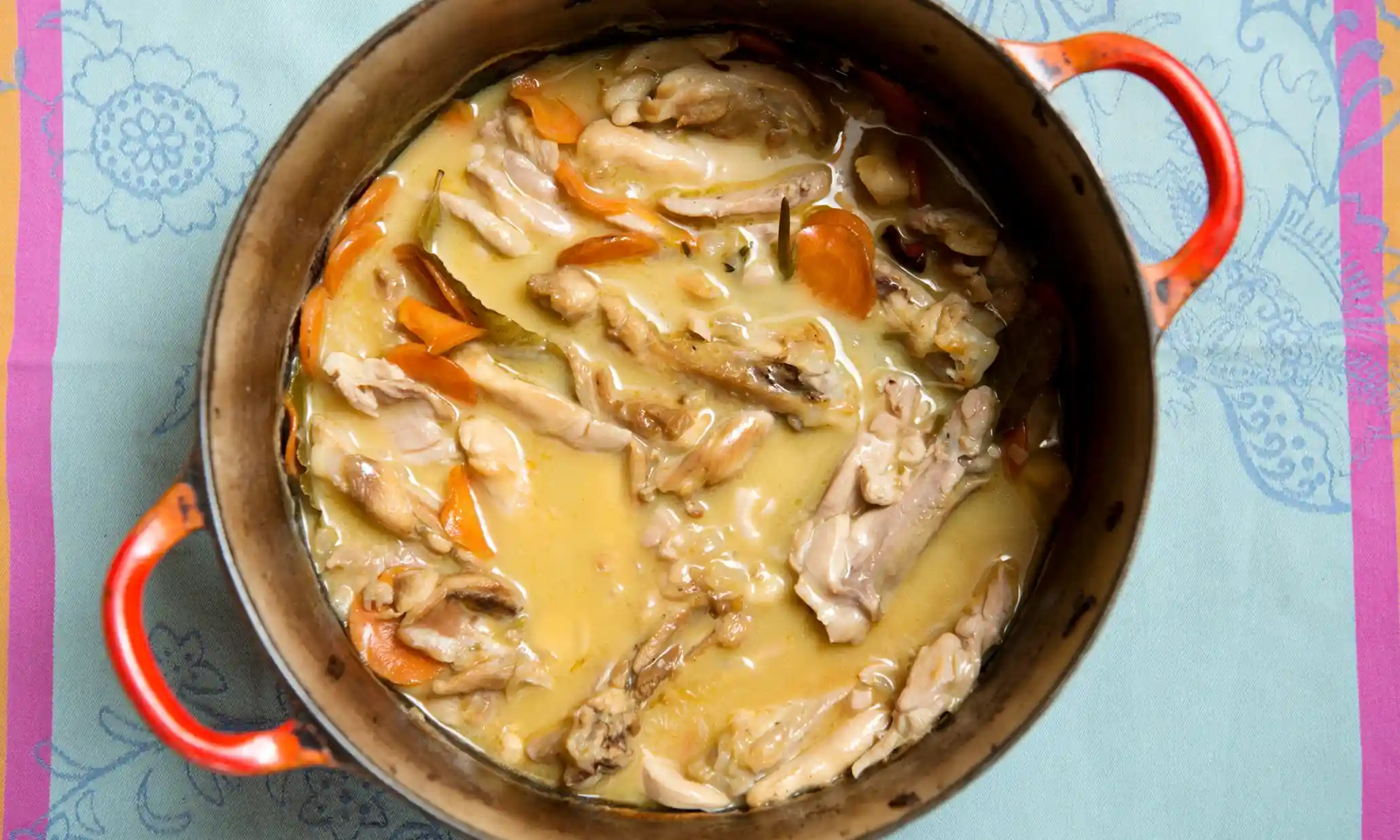“the meat soft as the leg of an angel
who has lived a purely airborne existence.”
Billy Collins

This post is all down to a first recipe and Donna Hay. It started out as one thing with some vague thoughts about a couple of related but different things, found a few others along the way, discarded some thoughts, and I suspect this will finally end up as a kind of mish-mash of this and that.
Herewith that first recipe - well I guess technically it's not the first recipe. Prior to this on page 24 we have some introductory pages on different cuts and some basic thoughts on roasting and cooking steaks and suchlike. Do they count as recipes? And just after that we have four different marinades for various meats, followed by four different accompaniments. What about them? Well yes I probably should have gone with the first one of those, but instead decided on the full-blown recipe for Slow-cooked veal osso buco.

The recipe is pretty simple - like most of her recipes, but it's not the one that you will find on her website. That is this version - Osso buco with polenta, which differs slightly but only a little. The link above to the recipe in my book is to a website called Cooking with Kathy Man. Another website called Tea and Scones had featured it, but not provided the recipe. I only mention that website because that lady has introduced in her life and on her blog Donna Hay Wednesday, which I assume means that on every Wednesday she cooks a Donna Hay recipe, which sounds so like my own little list of things to tick off, and ways to bring a little interest into the daily routine of cooking.
I wonder why she chose Donna Hay and does she have other people on other days of the week? So far I haven't assigned a particular day of the week a person or a topic, although I sometimes think that Friday alternates between traditional fish and a quiche of some kind. Accidental though. Not intended.

I think I purchased this book in Aldi quite a long time ago. There is a companion volume too which is my next first recipe book. They are small and in a series called Simple Essentials.
Simple is a very relevant description as when you come to look at some of the recipes you find that they are barely recipes at all, which I hasten to say is not really a criticism. The award winning style is equally simple - pale colours, minimal clutter with a lightness of touch. The photographs are top class from some of Australia's best, and, for me, this is is what grabs me I guess. I'm always sucked in by beauty. Which doesn't mean I rush to make any of the dishes displayed here. In fact I'm not at all sure that I have ever made anything from the book - but below a couple of photographs to demonstrate the class of the production values: Red wine and beef simmer - which more or less says it all, as does Veal with soft polenta and blue cheese.

In fact I was so blown away by this photograph at the end of the introduction that I almost decided to at last visit the topic of aprons instead. It's a scan from the book by the way, and so does not look nearly as wonderful as on the page. So I started researching aprons - found at least one that more or less said it all as far as the history was concerned - there were several, and at that point in time I therefore could not think of anything further to say. So I gave up at. Maybe some time in the future, when I've thought of another angle. If I do.
Before I finally get on to osso buco I also wondered about veal. You never see veal in the supermarket these days - well occasionally. In fact, not being a shopper in gourmet butcher shops, I have always thought that what was being presented as veal in butchers and supermarkets here was not really veal. It wasn't pale enough. And in recent times we have all become a bit averse to the idea of veal, although in a way the equally repugnant culling of male calves on dairy farms should present an opportunity for veal. Apparently this particular source has been neglected because those calves are from the wrong kind of breed of cow. Some 'enlightened' farmers are attempting to change that by raising them to a sligtly older age for what is called rosé veal. It's a problem, which I shall not pursue further here, but if you are interested you might like to look at an article by Anthony Puharich in The Sydney Morning Herald.
In the meantime if you want to make osso buco, you will probably already not be making real osso buco because you won't be able to get veal and will have to make do with beef, unless you seek out a gourmet butcher. And if you do this, then you are already being totally inauthentic as Felicity Cloake states: "There is no debate here: osso buco must be made from veal shin".
The cut is the mid rear shin which is sliced across the bone into thick pieces. This gives you access to the marrow which after long slow stewing, many, including Felicity, believe to be:
"the dish's crowning glory – anyone who sends the plate back to the kitchen without investigating their interior has missed out on the best bit." Felicity Cloake
Which made me remember an old boy-friend talking about the delights of sucking the marrow from beef bones. Well, he was a bit of a Yorkshire Heathcliff in some ways. I remember thinking how primitive to suck marrow from the bone. Never having been faced with the option- although now that I think of it we did often have ox-tail stew. Did those bones contain marrow? How little did I know - maybe my boyfriend was a true gourmet.

Felicity Cloake was however, talking about the very specific Osso buco Milanese for which there are several strict instructions, including that it be served with a saffron risotto Milanese and a gremolata. This version from Giorgio Locatelli - Risotto alla Milanese con osso buco is perhaps the perfect example of the classic. And like other 'classic' dishes from all those fiercely protective Italian towns and regions it has one of those DOP labels - a 'Denominazione di Origine Protetta'. So if you are going to make it don't call it Milanese. The risotto is obviously important. Giorgio Locatelli puts the risotto before the osso buco in his name for the dish. Osso buco, by the way, means bone hole. Not very tempting is it?
The writer of The Gourmet Chronicles in her article on Osso buco: the Italian song of winter gives a comprehensive account of the dish's origins, which actually seem to be relatively recent - the 19th century - late 19th century even, because there is no written recipe before then. Nobody knows really, although just about everyone agrees it comes from Lombardy if not specifically Milan.

Her recipe - shown right - was only written down, apparently at the request of a friend, because, normally, she said: "I never use a recipe". Thus the recipe that follows is what she did on one particular occasion, of which she says:
"Somehow, the dish survived the translation of my improvisations. A classic dish always does." Lori Gomez/The Gourmet Chronicles

Which is a sentiment endorsed by many others because, as Rachel Roddy says, it is: "a dish as ready for variation as it is reassuringly familiar". Her version is Roman - a dish served in a local trattoria on Wednesdays - the days of the week and particular meals again. There is no risotto here, and there are lots of peas, which just shows, that the name of the dish - osso buco - is perhaps an indication that you take the shin bones - they don't even specify from which animal - and then cook it however you like. Osso buco Milanese is just one of the variations you will find. There were lots of arguments about tomatoes for example.
Therefore when I looked for examples I concentrated on the variations although I began with Nagi Maehashi who was pretty much traditional with her Osso buco even though she said that mashed potato went with it pretty well too - as did many others. Then there was Cinnamon and pomegranate molasses osso buco with mint and orange gremolata from Shannon Harley/delicious. which is obviously not at all traditional except for the gremolata; Venison osso buco - The Spruce Eats; Beer and mustard braised osso buco - Taste, and the one that was furthest from the real deal - Bunny bucco from Jack Monroe - who just concentrated on the bone part of the equation -"it's basic building blocks" she called them - nothing else has anything to do with the original idea.
So what should osso buco taste like?
"Osso buco Milanese – veal shin with saffron risotto – has stood the test of time, because it is a perfectly balanced dish: hearty but delicate, unctuous but substantial. The meat, falling from the bone, is a little softer than the creamy yellow risotto, which has an al dente bite. The deeply savoury juices are balanced by the fresh, peppery citrus of the gremolata. And you also get to suck out the slippery marrow from the bone – which is a pleasure all of its own." Henry Dimbleby/Jane Baxter
Or - the other great thing about the article from The Gourmet Chronicles, was the discovery of a poem from an American poet Billy Collins, which she reproduces in full, some of whose lines open this post. So let me end with it too as the poet describes the feeling that he has from eating it:
"tonight, the lion of contentment
has placed a warm heavy paw on my chest."
Winter comfort food. The sausage traybake by the way, and though I say it myself, produced a very similar feeling. All that angst was worth it.
POSTSCRIPT
July 21 - in the middle of winter
2023 - Slivers - and no it's not one of those oddments posts. although it almost was. It's actually about a Chinese stir-fry dish with potatoes.
2022 - Artisan - how do you know?
2020 - Other blogs - from my computer's archives
2019 - Cassoulet
2016 - To market, to market












Wow that was quite a long Foodie's guide to cooking delcious sounding. Sorry a Gourmet's Guide to delicious food! I am looking forward to what can be saaid about Aprons. "Aprons over the Ages" perhaps? 🤣